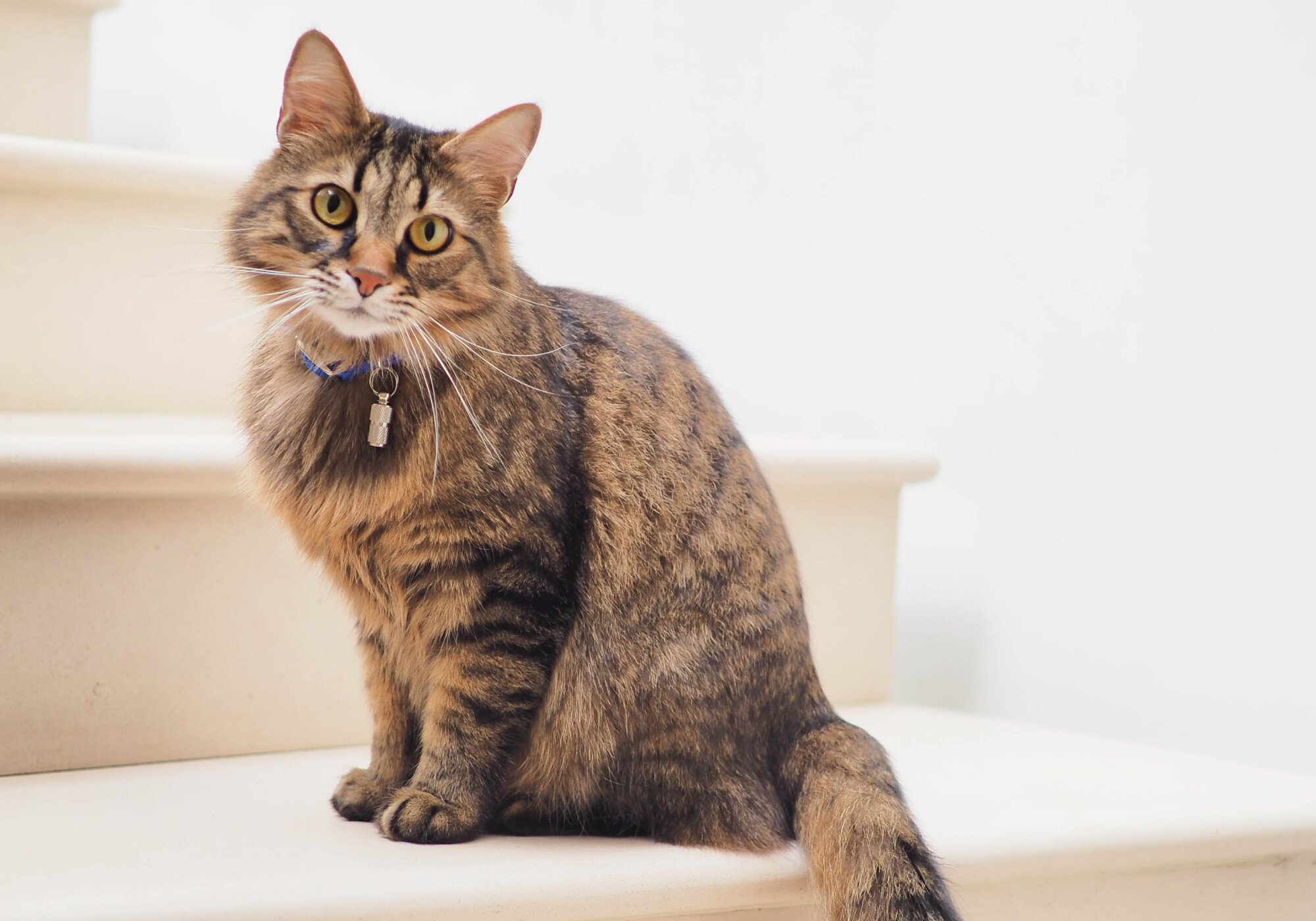Cats are interesting animals with bold personalities. And, the anatomy of a cat differs from other pet species.
Understanding your cat's needs can be tricky. But, knowing the ins and outs of their anatomy can help you develop a better connection with your pet.
In this article, we'll cover what cat anatomy is and the parts of the body and senses you should know about. Plus, how cat anatomy varies by breed.
What is cat anatomy

Cat anatomy is the makeup of your cat's body. From the tops of their ears to the end of their tail, all body parts are important to your cat's anatomy and health, including:
- Musculoskeletal system
- Internal organs
- Body systems
- Senses
Musculoskeletal system

Cats' bodies are full of muscles, bones, and joints that help them move freely. Each part of this body system in a cat has an important job.
Bones
Cats have around 250 bones in their body. Some bones in their body include:
- Tarsal bones
- Sacral bones
- Lumbar bones
- Thoracic bones
- Knee caps
- Hip bones
- Cervical vertebrae
- Wrist bones
- Shoulder blades
Apart from these bones, there are some bones that have unique functionality in cats.
Collar bone
Unlike other mammals, cats lack a collarbone that attaches to other bones. Instead, there are free-floating clavicle bones connecting the forelimbs to the shoulders. This allows them to slip through small spaces easily.
Spinal column
A cat's spinal cord is like a spool on a string. With the vertebral column connected by elastic discs, the flexible spine allows for a lot of unique movement. That's why cats' small spines can twist and turn like acrobats, even when navigating tight areas.
Tail bones
The bones in your cat's tail, also called caudal vertebrae, make up roughly 10 percent of the bones in their body. These bones support movement, balance, and bowel control.
Muscles and joints
Cats have an intricate muscular system that allows them to jump, run, and climb. With all of their muscles working together in their hind and front legs, cats are able to swiftly move and play.
The joints in your pet's body connect bones and help them move. Like dogs, cats can suffer from degenerative joint diseases in their shoulders, hip joints, knees, and elbows.
Internal organs

Your cat's organs play an essential role in their overall health. There are many organs in cats, including the:
- Brain
- Esophagus
- Heart
- Liver
- Lungs
- Stomach
- Small intestine
- Spleen
- Kidney
- Liver
- Colon
- Rectum
Your cat's lungs, heart, and brain work together to keep them alive and send messages to different parts of the body. The esophagus guides meals to your dog's stomach, while its airways help them breathe.
The stomach and small intestine help with digestion, soaking up all the good stuff from their food. The colon and rectum take care of waste elimination.
The kidneys, spleen, and liver perform important jobs. These jobs include:
- Eliminating toxins
- Producing hormones
- Maintaining their body temperature at the right level
Body systems

Taking good care of your cat means keeping all parts of their body healthy. And, knowing how each part works.
Digestive system
Cats are carnivores, meaning they benefit from protein-based diets. This is where the cat’s digestive system comes in. The digestive tract works to break down food into smaller elements absorbed as nourishment and energy.
Some important organs in the digestive system include the:
- Large intestine
- Small intestine
- Gallbladder
- Salivary glands
Respiratory system
Your cat's respiratory system helps them breathe and smell. This system works to supply oxygen and release carbon dioxide to provide energy.
Some organs in the respiratory system include:
- Nasal passages
- Nasopharynx
- Larynx
- Lungs
- Trachea
- Bronchi
Cardiovascular system
Their cardiovascular system, composed of the heart and blood vessels, transports oxygen, nutrients, and waste material throughout the body. This circulatory system is essential to a cat's overall health.
First, the heart pumps deoxygenated blood cells from the body to the lungs. Then, the blood vessels circulate new oxygen molecules throughout the body. There are three types of blood cells in your cat's body:
- White blood cells
- Red blood cells
- Platelets
Integumentary system

The integumentary system consists of your cat's claws, paw pads, skin, and hair coat. Feral and domestic cats rely on their fur and skin to ensure good health, comfort, and survival.
The epidermis and dermis make up the skin on your cat. The epidermis acts as an environmental shield, keeping your cat's body temperature regulated in every season. The dermis has tissues that hold nerves, blood vessels, hair follicles, and sweat glands.
Your cat's paw pads also help regulate body temperature and protect the feet during movement. Their claws on their front and hind legs aid in:
- Catching and holding prey
- Tearing meat from bones
- Climbing
- Self-defense
Senses

Cats have their own set of special senses, like seeing, hearing, smelling, and feeling. Cats use their senses to explore their surroundings to navigate and thrive in their environment.
The following parts of your cat's anatomy allow them to use their senses.
Cat's eyes
Cats have eyes on the front of their face, allowing them to see other animals accurately. Cats have very large eye sockets and a third eyelid to keep their eyeballs moist.
A cat's pupil and retina contain more rods than cones. This means they can see well in low light like night vision, unlike other species.
Cat's ears
Your cat's sense of hearing comes from their powerful ears. A cat can move each ear independently to pinpoint sound sources precisely.
Cat's nose
Cats have around 200 million smell receptors in their nasal cavity, making their sense of smell extremely powerful. This impressive sense of smell allows cats to sniff out prey and communicate messages with other cats.
Cats may also detect pheromones or catnip in their environment with their nose. Pheromones may calm down a cat or help them feel comfortable.
Cat's mouth and whiskers
Adult cats have 30 sharp teeth. Your cat's teeth have important roles during meals and while hunting down food sources. Their lower jaw is flexible, allowing for larger bites of food.
Your cat also has a rough tongue covered by barbs called papillae. Your cat's tongue aids in grooming habits like fur cleaning or getting through hard-to-swallow bites.
Your cat's whiskers have lots of nerve endings and can detect the slightest environmental changes. Whiskers allow cats to detect signals of incoming danger nearby.
How anatomy varies by breed

There are roughly 75 different cat breeds. Each breed has unique traits.
Adding a new cat to your family? Or, want to learn more about your pet's breed? The most common differences seen in breeds are:
- Coat variations
- Facial features
- Body size
Coat variations
While no two cats are the same, the most obvious distinctive feature between cat breeds is coat color and length. Domestic shorthairs and domestic longhairs are common cat breeds.
Domestic shorthairs vary in coat color, but all have short hair. The same applies to domestic longhairs. Mutant hair breeds are unique, with short, curly hair.
Hairless breeds lack a thick, shiny coat. No matter what length of coat your adult cat has, it has an important role in regulating body heat.
Facial features
Your cat's facial features may vary depending on their breed. Breeds like Persians, Scottish folds, and Himalayans have flat faces. Other felines like domestic shorthairs have narrow, angular faces.
A male cat may have a more wide, rounded face than a female cat. Testosterone is the cause of this facial difference.
Body size
There are small, medium, and large-sized cat breeds. The average cat breed is between 9 and 15 pounds.
Depending on your cat’s breed, they may look different. Regardless of varying anatomy, most cats have quirky, lovable personalities and make for great companions.
Understanding your cat's anatomy is important to keep them healthy. Consider your cat's breed, overall health, and body system function when choosing wellness pet products for them.



